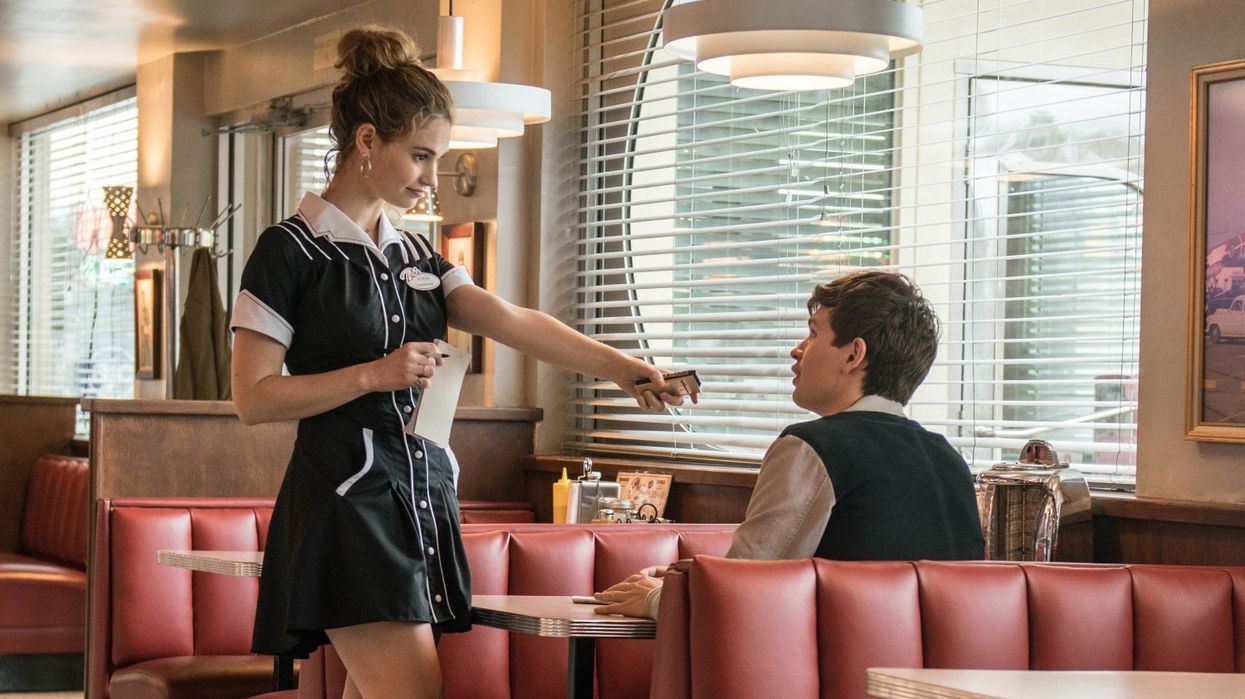Watch: How Edgar Wright Uses Costume to Color Code His Characters
'Baby Driver' is a master class in costume design.

With all the flash and bang that appears on screen in Baby Driver, it’s easy to overlook one of the film’s most expertly crafted pieces of production: the costume design. What can a costume tell us about the character? For Edgar Wright, the answer is a whole bunch.
Wright's attention to detail within all aspects of his direction is unmatched, but the costuming in his films draws little attention. “As far back as the TV show I did before Shaun of the Dead, Spaced, I remember someone saying something about that show which always stuck with me," Wright remembers of his earlier work. "They said, ‘Well, the characters are all really easy to draw.’ And from that point on in all of my movies, with Baby Driver being no exception, I’m always looking to color-code the characters.”
Baby's own morals are quite literally brought into a gray area which is reflected in costume.
Not only does this help the audience keep track of who’s who once the action gets going (which often strikes very abruptly in Wright’s films) it also reveals personality traits of each character. At some points, the director even employs costuming as a foreshadowing device.
Wright works closely with costume designer Courtney Hoffman to establish a different color set for each character to have his or her own look. See a few examples from Baby Driver that Daniel Netzel of Film Radar lays out in the video essay below, and read on for our takeaways.
Baby
Let's start with Baby; he is the protagonist of the film after all. Baby dresses in black and white. Now, this could be interpreted as a parallel to the two very different lives that he leads. The darkness would represent his getaway work in the criminal underworld, while the lightness represents his newfound romance with Debora and his undying care for his deaf adopted father at home.

Perhaps most importantly, Baby’s colorless garb sets him apart from the rest of his gang’s brightly colored attire. He simply doesn’t fit in. This, of course, is a nod to his distaste for violence in comparison with the motley crew.
Something you may not have noticed at first glance is how Baby’s undershirt gets darker as the film goes along. In the end, he has to throw his aversion to killing away and is forced to engage in violence to save his and Debora’s life. His own morals are quite literally brought into a gray area which is reflected in costume.
Debora

Wright takes their color scheme connection to the next level when he begins flashing to black and white dream sequences, idealizing their romance in a world without violence, far away from the troubles Baby faces with the gang.
Bats

Doc

Edgar Wright has a knack for detail, and costume detail is certainly no exception—it could be argued that he has the ability to tell a story through costume alone. Throughout the film we see the character’s costumes change to reflect their own journey, showing that Wright is truly a filmmaker who never wastes a single opportunity to support his story.











